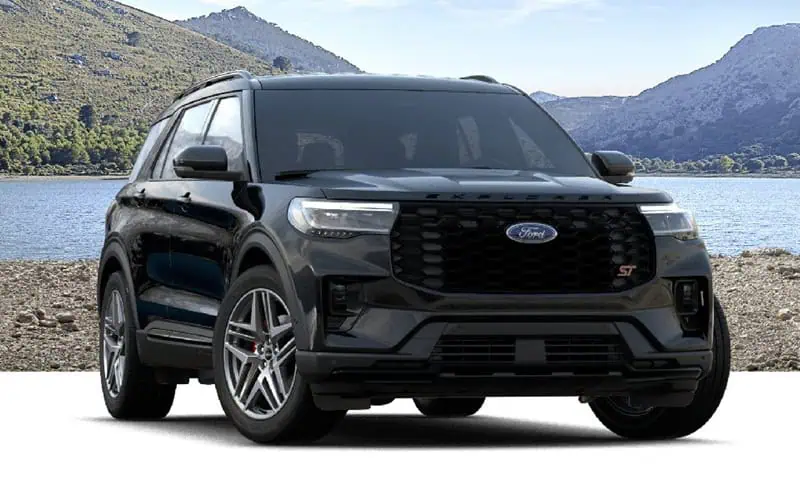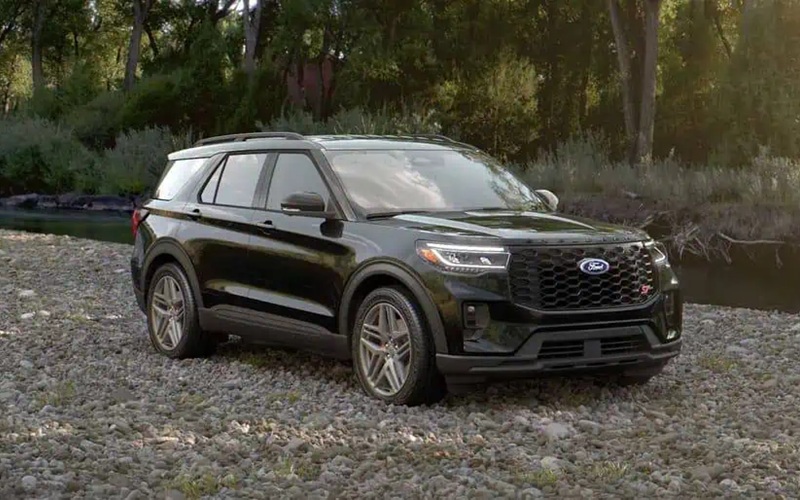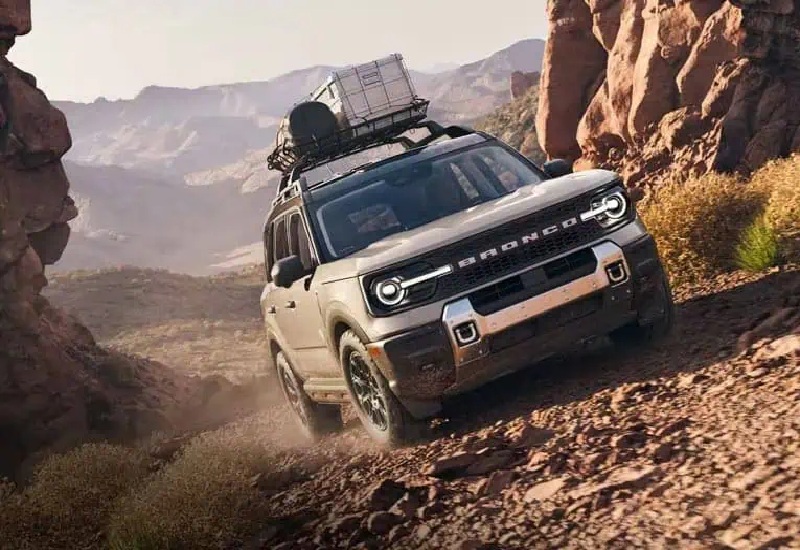Ford Explorer: Driving Modes to Avoid in Winter Conditions
The Ford Explorer has established itself as a versatile and capable SUV that excels in various driving conditions. One of its standout features is the Terrain Management System, which offers multiple driving modes designed to optimize performance across different environments. However, not all of these modes are suitable for winter driving. Understanding which driving modes […]
The Ford Explorer has established itself as a versatile and capable SUV that excels in various driving conditions. One of its standout features is the Terrain Management System, which offers multiple driving modes designed to optimize performance across different environments. However, not all of these modes are suitable for winter driving. Understanding which driving modes to avoid during snowy and icy conditions can significantly enhance safety, traction, and overall driving experience during the coldest months of the year.

The Ford Explorer Driving Modes
Modern Ford Explorer models feature a sophisticated Terrain Management System with up to seven distinct driving modes, depending on the trim level and model year. These modes modify various vehicle systems, including:
- Throttle response
- Transmission shift patterns
- All-wheel drive torque distribution
- Traction control sensitivity
- Stability control intervention thresholds
- Steering feel
Each mode is designed for specific conditions, but some can create dangerous handling characteristics when encountering roads with snow and ice.
Driving Modes to Avoid in Winter
Sport Mode
Sport mode enhances performance and responsiveness during spirited driving. However, this mode makes several adjustments that can be problematic in winter conditions:
- Sharpens throttle response, making it easier to spin wheels on slippery surfaces
- Delays upshifts to keep the engine at higher RPMs, potentially reducing stability
- Reduces power steering assistance, decreasing feedback about road conditions
- May send more power to the rear wheels, increasing oversteer potential
Eco Mode
While Eco mode might seem harmless, it makes several adjustments that can compromise winter driving safety:
- Dulls throttle response, which might seem helpful, but can make power application less predictable
- Modifies transmission behaviour to upshift earlier, potentially putting the vehicle in a higher gear than optimal for snow traction
- Reduces climate control effectiveness, potentially compromising visibility through defrosting
- May reduce AWD system engagement to save fuel, limiting traction capability
Normal Mode
Even the standard Normal mode isn’t ideal for winter driving, as it’s calibrated for dry, clear conditions:
- Doesn’t pre-emptively engage all-wheel drive systems
- Maintains standard stability control thresholds
- Doesn’t optimize braking for slippery conditions
Recommended Winter Driving Modes
Snow/Wet Mode
The Explorer Snow/Wet mode makes several modifications specifically designed for winter driving:
- Softens throttle response for more gradual power delivery
- Starts in higher gears to reduce torque to the wheels
- Increases traction control sensitivity
- Optimizes AWD torque distribution for slippery conditions
- Modifies stability control for earlier intervention
Deep Snow/Sand Mode
For particularly challenging winter conditions with significant accumulation:
- Further adjusts throttle mapping to prevent wheel dig
- Allows controlled wheel spin to maintain momentum through deep snow
- Optimizes transmission shift points for low-end torque
- Maximizes AWD system engagement
Additional Winter Driving Considerations
Beyond selecting the appropriate driving mode, Explorer owners should consider:
- Using the hill descent control for steep, slippery descents
- Activating the heated steering wheel and seats before driving to improve comfort and reduce distraction
- Utilizing the front and rear defrosters to ensure optimal visibility
- Considering winter tire installation for optimal traction regardless of driving mode
- Familiarizing themselves with how to temporarily disable traction control if rocking the vehicle out of deep snow becomes necessary
5 Facts About Ford Explorer Winter Driving Modes
- The Explorer Terrain Management System processes over 30 different vehicle inputs per second to continuously optimize performance in winter driving modes, adjusting power delivery faster than human reflexes could react.
- Ford engineers tested the Explorer winter driving modes in northern Sweden at temperatures as low as -40°C to ensure reliable performance in extreme conditions.
- The 2022+ Explorer models feature a unique “deep snow algorithm” that can detect when the vehicle is travelling through powder versus packed snow, adjusting power delivery differently for each condition.
- When in Snow mode, the Explorer all-wheel-drive system can predictively transfer torque to wheels before slip occurs by detecting minute changes in wheel speed that signal impending traction loss.
- The Explorer Terrain Management System features a specialized winter calibration for its electronic stability control, which allows for slightly more yaw (sideways movement) before intervention, thereby preventing the system from being overly intrusive during normal winter driving.
Questions and Answers About the Ford Explorer
Does the Ford Explorer automatically switch to winter driving mode when the temperature drops?
- No, the driver must manually select the appropriate driving mode. This SUV does not automatically switch modes based on temperature.
Will using Snow mode affect my fuel economy?
- Yes, Snow mode may slightly reduce fuel economy compared to Normal or Eco modes because it engages the all-wheel-drive system more frequently, optimizing for traction rather than efficiency.
Can I use Tow/Haul mode in winter conditions when pulling a trailer?
- Yes, but it’s recommended to use Tow/Haul mode in conjunction with Snow mode when towing in winter. On newer models, selecting Snow mode while in Tow/Haul creates a specialized winter towing calibration.
Does Trail mode work well in snowy off-road conditions?
- While Trail mode can work in snow, Deep Snow/Sand mode is specifically calibrated for snow performance and is generally the better choice for snowy off-road conditions.
How does the Explorer winter driving mode affect the braking system?
- In Snow mode, the SUV adjusts its anti-lock braking system (ABS) for more effective operation on slippery surfaces, allowing slightly more controlled wheel lockup to build up a wedge of snow for improved stopping power.
Should I use Eco mode to save fuel during winter driving?
- Eco mode is not recommended for winter driving as it reduces AWD system engagement and creates less predictable throttle response, potentially compromising safety for marginal fuel savings.
Does the Explorer driving mode affect the function of safety systems like automatic emergency braking?
- Yes, winter driving modes recalibrate safety systems to account for longer stopping distances and different vehicle dynamics on slippery surfaces.
How does the Intelligent 4WD system in the Explorer differ from older 4WD systems in winter?
- The Intelligent 4WD system can transfer power between wheels continuously and instantaneously, unlike older systems that required manual engagement or had fixed power distribution.
Can switching driving modes help if I’m already stuck in the snow?
- Switching to Deep Snow/Sand mode may help extract a stuck Explorer by allowing controlled wheel spin, which enables the vehicle rock out of a snowbank or deep snow.
Do the Explorer hybrid models have different winter driving modes?
- The hybrid models feature the same winter driving modes but with additional calibrations to optimize the electric motor’s instant torque delivery for improved traction in slippery conditions.
*Disclaimer: Content contained in this post is for informational purposes only and may include features and options from US or international models. Please contact the dealership for more information or to confirm vehicle, feature availability.*


